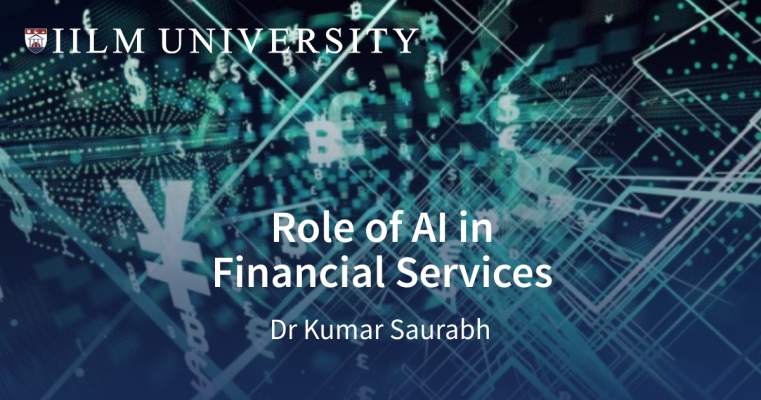The emergence of automation has shifted the nature of jobs across sectors. So does the financial services. Financial services are also not immune to this development and are impacted by automation and artificial intelligence. Today, financial services are not limited to brick and mortar structure only. Traditionally, financial services used to be the job of a geeky person with a calculator. The financial industry used to be a paper-intensive industry.
But now, things have changed and the nature of the job has changed from bookkeeping to critical financial analysis. Even the Banking sector is technology-driven and gone the digital way. How one usually thinks about jobs in the financial services domain has already changed or in the process. Do you aspire to join financial services in the near future? What are the future job profiles for you? To answer these questions, one needs to understand how the increasing role of Artificial Intelligence will affect the future of financial services and how you can strive to stay relevant.
Impact of AI on jobs
Artificial intelligence AI will be the cause of great disruption for stable career choices of the financial services sector. According to one estimate, across the globe, about 1.3 million bank workers will lose their jobs. Traditional banking jobs like cashier, clerk, etc. are likely to be reduced by automation. All routine jobs are likely to go away with the increased interference of artificial intelligence/automation.
Artificial intelligence with a combination of Big Data is now even affecting jobs involving critical analysis. The combination of Big Data and AI enables us to make decision-based on humongous data and predict the future. This will thus affect the job of a financial planner, tax personnel, and others. One needs to consider this automation as a wakeup call and as an indication of the need to continuously enhance our skills to remain relevant in this fast-evolving dynamic world.
Emerging Profiles in the Financial Services Domain
On one hand, AI will cut routine repetitive jobs; and on the other hand, it will also create several jobs. It is estimated that in India, more than 50 lakh new jobs in the financial services sector will be created in the next ten years. Fintech is the new buzz word today. It is a combination of Finance with Technology. This Fintech sector will provide new job opportunities to aspirants in the future. ‘Finance Engineer’ and ‘Sustainable Wealth Manager’ are some job titles in the future.
Roles for personalized financial guidance will emerge in the future. Financial advisors who have analytical skills and the ability to translate data into relevant and meaningful stories will be in demand. Jobs in the field of blockchain, mobile wallet, and Robo advisors will flourish. Blockchain and apps developers, financial analysts, product managers, compliance experts, cybersecurity analysts, quantitative analysts, business development managers, and data specialists are few profiles that will be in demand.
Skills for Future Financial Services
The need for highly skilled and tech-savvy financial professionals is rising. In-depth and holistic financial knowledge will be the key to career success in this sector. Data analytics and sustainability are other important skills to sustain and thrive in the future market. ‘Superforecasting’ is an ability that is imperative in the domain of ‘Cryptocurrency’. Superforecasting means objective analysis of all present and past events and breaking down complex problems to smaller pieces. Key requisite skills are business planning, data analytics, along with knowledge of C#, Java language, Murex language, Python, and other programming languages.
Contribution of IILM in your journey
The teaching pedagogy at IILM fosters a learning environment to enhance creativity, originality, critical thinking, and leadership skills in students. It also inculcates and equips students with future scoped skills. The focus is two-pronged – traditional teaching to develop basics along with new-age electives like Fintech, Data Analytics, Python, R, etc. to give a perfect blend of modern and futuristic courses. IILM thus provides a complete package to students and makes them ready for financial sector jobs and thrive for career success.



